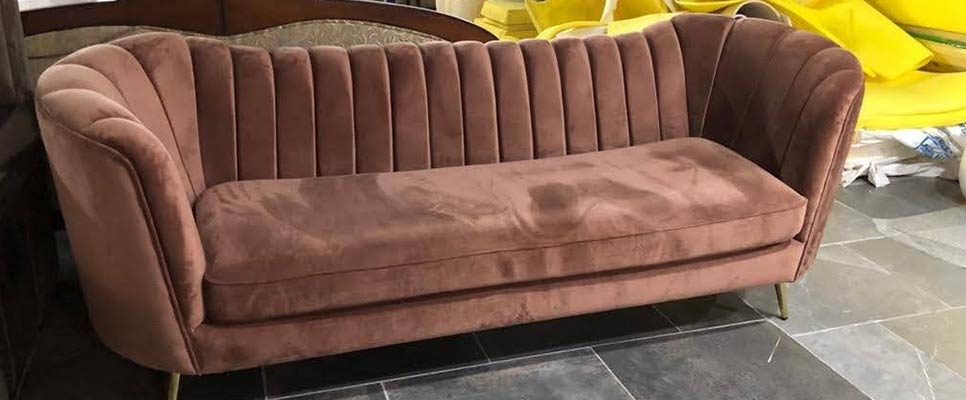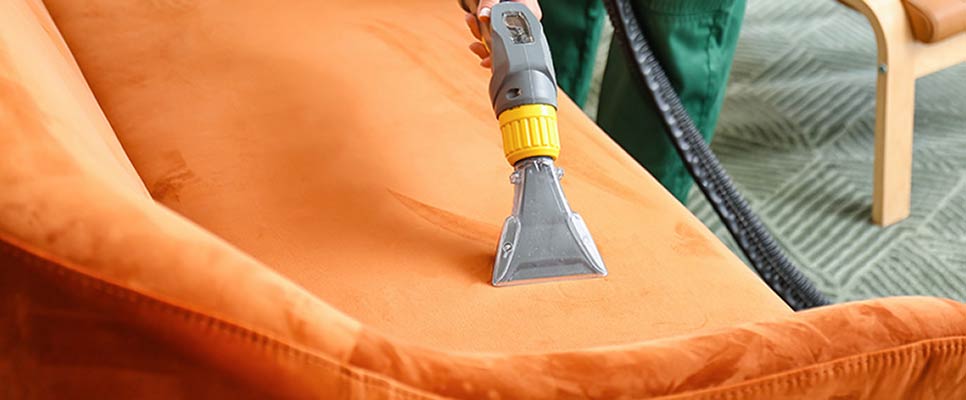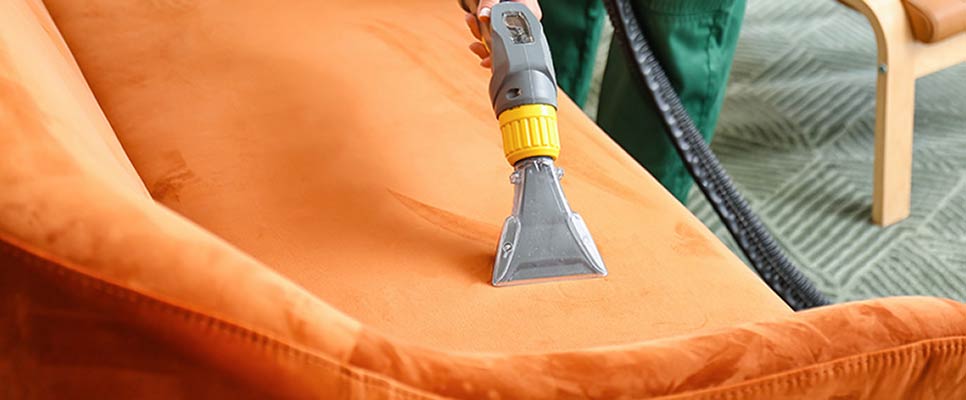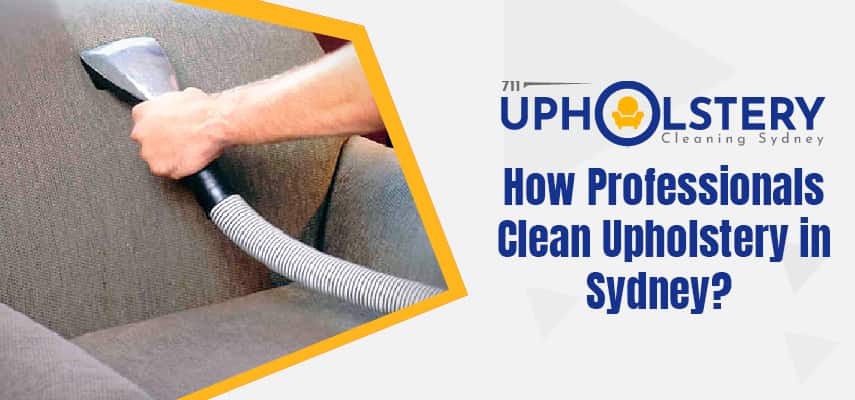People with upholstered furniture often struggle to maintain it spotless. Furniture like couches, dining room sets, armchairs, lounges, etc is often upholstered and requires extra care. So, for this using the best upholstery cleaning agents is the key. In addition, the way one executes the cleaning procedure also plays a vital role. Therefore, for someone to attain the best results, the cleaning procedures had to be tested and reviewed. We are here to do the same. This article sheds light on such cleaners that have been tried, tested, and reviewed. In this blog, we discuss the 8 best upholstery cleaners, tested and reviewed.
Upholstery cleaning is tough, but here is our attempt to make it easier and also efficient. Follow us up to know about cleaning techniques, tips, and tricks better.
Here Are The Top 8 Picks That Work Wonders
Upholstery cleaning is diverse and there is no particular cleaning method that offers the best results. Compared to carpet cleaning, upholstery cleaning is the most difficult job as it is manufactured using different types of fabrics and fibres. Be it synthetic microfiber or upholstery made of silk, the cleaning techniques and the cleaning agents should be customized accordingly. Because few fabrics are sensitive to water and are prone to damage. So here are our top 8 best upholstery cleaners, tested and reviewed.
1. Woolite Instaclean Permanent Stain And Odor Remover
This cleaner in particular consists of cozy ingredients that work best for lightening the stains. And is also safe to use as it is EPA safer choice certified. To get the best results, blotting is the best way. By blotting the stain removal procedure gets easier as it consists of ingredients that will break the contact of the stain with the upholstery fabric and inhibits further penetration. Since this formula consists of hydrogen peroxide, it acts as a bleach that is safe for your upholstery fabrics.
- Outcome: By using this solution one can effectively eliminate stains due to coffee, juice, or even tomato sauce.
2. Bissell Multi-purpose Portable Carpet And Upholstery Cleaner
In case you surf online, you might come across this product as it has been raved about in the market for so long. The hype is for real and the results are quite exceptional. This product can bring back the shine and is the best option to clean the upholstery of your couch, lounge, etc. It is not only used for cleaning purposes but is also effective in the removal of stubborn stains. By simply mixing the cleaner formula with water you can prepare a suspension. This is further sprayed onto the couch and gently scrubbed using a scrubber.
- Outcome: This cleaner is quite effective and quick in the removal of stains while keeping the upholstery intact. This works best on upholstery as well as carpets.
3. Bissell Professional Stain And Odour Stain Remover
This is the best when it comes to cleaning your upholstery and is specialized for eliminating pet stains. Since it contains enzymes that can combat bacteria and other microbes, the chances of infection can be reduced. Pet stains occurring due to pet pee can be the reason for mould development. But this product can actively eliminate foul odour as well as stains.
- Outcome: It is effective in the removal of pet stains, foul odours, food stains, etc. This can also be used for the stain removal of upholstery as well as carpets.
4. Capture Carpet & Rug Dry Cleaner
This is a dry cleaning agent and is used for cleaning delicate fabrics. It is efficient in cleaning your upholstery, carpets as well as rugs. Delicate fabrics such as velvet or silk can be cleaned with this cleanser that is not water-based. This simply provides the best solution for you as the majority of the cleansers are water-based and leave water marks once the upholstery is dry. This cleanser doesn’t leave water marks as well.
- Outcome: It doesn’t leave a water spot, So, it is an ideal choice to consider. It can brighten and freshen delicate fabrics without causing any damage to your upholstery fabrics.
5. Method Stain And Odour Treatment Spray
This is the plant-based cleanser that is used exclusively to clean the upholstery. This product consists of plant-based ingredients that are proven to be extremely effective upon testing. It is quite different from laundry detergents, branded dish-washing liquids, all-purpose cleaners and others that claim to be effective in thorough cleansing. But this product stood out because of its unique feature of cleaning even the tough fabrics of carpets and upholstery.
- Outcome: This is effective in eliminating target stains. Since it is a plant-based cleaner, it contains no harmful chemicals and is kid, pet and eco-friendly.
6. Wine Away Red Wine Stain Remover
It is used for the removal of red wine stains from the upholstery. This wine stain remover is proven to be the best in eliminating red wine stains and is clinically proven as it is tested in laboratories. Without having to perform excessive rinsing or blotting, you can get rid of the wine stains that can completely make the upholstery look ugly. Not only on upholstery but is also effective in eliminating stains from carpets as well as other clothing.
- Outcome: This can easily eliminate wine stains, especially the stains of red wine. Once the stain remover is spritzed on the upholstery, the colour starts to fade away.
7. Furniture Clinic Leather Care Kit
Upholstery of leather furniture often requires extra care and cleaning them with this furniture clinic leather care kit can give the best results. This is effective in the removal of grime particles as well as protects the upholstery from future stains. This kit comes with a sponge applicator, buffing cloth, leather cleaner and protection creams. It is effective in cleaning jackets, shoes, bags and many other leather objects in addition to leather upholstery.
- Outcome: This is seen to be effective in cleaning leather furniture without drying them extremely. The protection cream is effective in making it easier for you to eliminate stains that might occur in the future.
8. Scotch-Brite Large And Wide Surface Roller
This is used for getting rid of pet hair and is a wide roller that offers great coverage. Therefore, it facilitates cleaning larger surfaces and can thoroughly clean carpets and upholsteries. It comes with a handle to hold the roller and is quite convenient to use. Due to static electricity, pet hair in general clings to fabrics. So with the help of a scotch-brite roller, it is observed to have picked up a lot of hair in one go. These tools generally perform well in our tests and evaluation.
- Outcome: It is comfortable as well as does the job of pet hair removal perfectly.
Conclusion
The above-mentioned are the 8 best upholstery cleaners, tested and reviewed. These are the best cleaners that are available in the market. Each of these cleansers is effective in dealing with different concerns of yours and is proven to be the best. In case you are facing any of the issues or want to make your furniture upholstery look brand-new, simply get these products and use them accordingly. The outcomes you get will be extremely exquisite.





